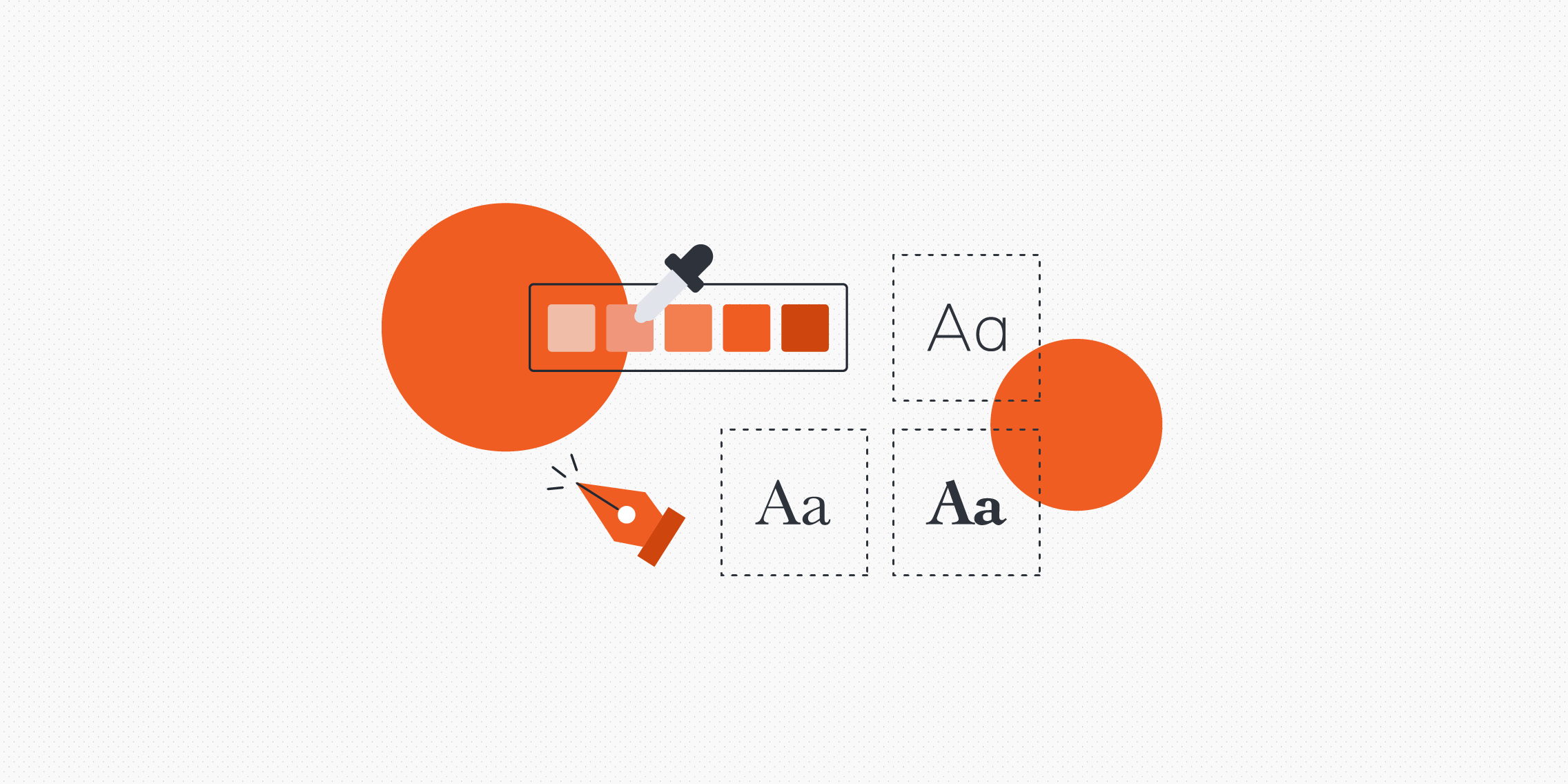As the world becomes increasingly tech-savvy, the tools and gadgets we use daily are also evolving. In this competitive market, creativity is more than having the right tools to bring your ideas to life. The design landscape is constantly changing, and various UX tools are emerging, each with the power to transform how designers work and address unique challenges.
Best UX Design Tool
Some tools provide a wide range of features that can guide designers through the entire UX design process, from initial wireframing to polished interactive prototypes. Others take a more specialized approach, allowing designers to focus on specific areas such as wireframing, prototyping, or icon design. Choosing the right tools for one’s role is like selecting suitable instruments for a symphony; the right tools can enhance work quality and significantly boost the designer’s efficiency, instilling a sense of confidence and productivity.
This article delves into the top UX design tools, showcasing their features, pricing, and benefits. It also includes a section on choosing the right UX design tool.
Figma
Figma is a cloud-based design platform facilitating smooth collaboration between designers and developers. It is highly esteemed for its user-friendly interface and extensive features designed for UX/UI.
Features
- Real-time collaboration
- Vector networks and pen tool
- Prototyping with interactive elements
- Extensive plugin ecosystem
- Version history and file organization
Pros
- Real-time collaboration in tools like Figma fosters a sense of connection and teamwork among designers, allowing teams to work together seamlessly.
- Prototyping capabilities enable the creation of interactive prototypes that simulate user journeys.
- Built-in design systems set consistency and maintain brand identity across digital products.
Cons
- The extensive feature set can be overwhelming for beginners.
- Full functionality requires an internet connection.
Price
The basic Figma features are free, but for professional usage, the packages start from $15 to $75
UXCam
UXCam is a user experience analytics tool that helps designers understand how users interact with their mobile apps by providing insights through heatmaps, session recordings, and user flows.
Features
- Heatmaps to visualize user interactions
- Session recordings for analyzing user behavior
- User flows and funnel analysis
- Crash analytics and performance monitoring
- Integration with other analytics tools
Price
The pricing for UXCam is entirely custom and available upon request, but there is also a free version where you can use fundamental features.
Pros
- UXCam provides comprehensive user behavior analytics, empowering designers with detailed insights into user interactions.
- It helps identify pain points in the user journey.
Cons
- It is primarily focused on mobile apps, limiting its use when it comes to web-based projects.
- It can be overwhelming for beginners due to the depth of analytics.
Adobe Photoshop
Adobe Photoshop is a powerful graphics editor widely used for creating and editing images. It is a go-to tool for designers working on pixel-perfect interfaces and detailed visual designs.
Features
- Advanced image editing and manipulation tools
- Layer management and blending modes
- Vector graphics creation
- Extensive library of filters and effects
- Integration with other Adobe Creative Cloud apps
Price
Adobe Photoshop’s pricing is paid, with different rates for single use, students, and enterprises. However, there are still free trials, during which you can use fundamental features for some time before switching to the paid versions.
Pros
- Adobe Photoshop provides Industry standards for image editing and graphic design.
- Highly customizable with plugins and scripts.
- It has smooth integration with other Adobe tools
Cons
- Steep learning curve for beginners.
- It is not specifically tailored for UX/UI design and lacks prototyping features.

Sketch
Sketch is a vector-based design tool specifically made for UX/UI designers. It’s known for its lightweight performance and extensive plugin ecosystem, making it a favorite among many designers.
Features
- Vector editing and pixel-perfect design
- Symbols and reusable elements
- Collaborative workspace with real-time updates
- Extensive plugin library for added functionality
- Prototyping and developer handoff tools
Pros
- Intuitive and lightweight, designed specifically for UX/UI design.
- Benefit from a large community and extensive plugin support.
- Excellent for creating scalable designs.
Cons
- It is exclusive to Mac users, which limits accessibility for Windows users.
- It also requires additional tools for real-time collaboration.
Price
There are two types of Sketch versions: the Standard package for individuals and the iOS package. Both packages offer a free trial, during which you can use very basic features for some time before opting for the paid versions.
Adobe Illustrator
Adobe Illustrator is a vector graphics editor that creates scalable graphics and illustrations. It’s an essential tool for designers who need precise control over their vector designs.
Features
- Advanced vector editing tools
- Scalable designs without quality loss
- Extensive typography and text tools
- Integration with Adobe Creative Cloud
- Artboards for managing multiple designs in a single file
Pros
- Industry-leading vector design capabilities.
- Highly customizable workspace.
- Ideal for creating logos, icons, and detailed illustrations.
Cons
- The software is not designed for UX/UI and requires additional prototyping and interaction features.
- It has a steep learning curve for beginners.
Price
Adobe Illustrator is a paid software package with two different packages. One is for individual usage, and the other is for enterprises. Both packages cost between $20 per month and $264 per annum.
UXPin
UXPin is a design tool that bridges the gap between design and development by offering advanced prototyping features with built-in design systems and code components.
Features
- Design systems and libraries
- Interactive prototypes with logic and conditions
- Code-based design elements for developer handoff
- Collaboration and feedback tools
- Accessibility features
Pros
- Advanced prototyping with real-code components.
- It supports the smooth integration of design systems and efficient version control.
- Ideal for large teams working on complex projects.
Cons
- Higher price point compared to other tools.
- Steeper learning curve due to advanced features.
Price
UXPin offers four different paid versions, each with unique features and pricing, but all plans are available as yearly packages.
Framer
Framer is a UX design tool focusing on interactive design and rapid prototyping. It’s known for its high-fidelity prototypes that closely resemble the final product, making it ideal for testing and user validation.
Features
- Interactive design with animations and transitions
- Real-time collaboration and feedback
- Integration with design tools like Figma and Sketch
- Code-based components for custom interactions
- Pre-built templates and design assets
Pros
- High-fidelity prototypes with realistic interactions.
- Real-time collaboration enhances teamwork.
Cons
- It Requires coding knowledge for advanced features.
- Framer presents a steeper learning curve for designers unfamiliar with code.
Price
Framer offers various pricing plans, starting from a free option and going up to $30. What sets Framer apart from other apps is its unique feature of custom packages.
Proto.io
Proto.io is a prototyping tool that allows designers to create fully interactive prototypes without writing code. It’s famous for building mobile and web app prototypes with realistic interactions and animations.
Features
- Drag-and-drop interface for creating prototypes
- Interactive elements and animations
- User testing and feedback tools
- Integration with popular design tools
- Collaboration and sharing features
Pros
- Creating interactive prototypes does not require any coding.
- Intuitive interface suitable for designers of all skill levels.
Cons
- Limited design tools compared to full-fledged design software.
- It has a Higher cost for advanced plans with additional features.
Price
Proto charges a base fee of USD 1,000 monthly plus additional costs based on your messaging volume. The price per user begins at $1, with discounts available for over 5,000 and 50,000 users. You can prepay the recurring fee starting with a minimum of $1,000. Contact our experts to explore the prepaid option.
Justinmind
Justinmind is a prototyping tool that enables designers to create wireframes, prototypes, and high-fidelity designs for both web and mobile apps. It’s known for its comprehensive set of features that cater to both beginners and advanced users.
Features
- Wireframing and prototyping tools
- Interactive prototypes with dynamic elements
- User testing and feedback collection
- Integration with design and development tools
- Collaboration features for team projects
Pros
- An all-in-one tool for wireframing, prototyping, and user testing.
- Suitable for both beginners and advanced users.
- Robust set of features for creating detailed prototypes.
Cons
- Slightly outdated interface compared to newer tools.
- The free plan has limited collaboration features.
Price
Justinmind offers plans starting from Free, with Standard at $9, Professional at $19, and Premium at $39 per editor/month (billed annually).
Conclusion
Choosing the right UX design tool is crucial for creating exceptional user experiences. Each tool offers unique features and benefits, catering to different aspects of the design process. Figma and Sketch are excellent for collaborative design work, while tools like Framer and Proto.io shine in interactive prototyping. Adobe Photoshop and Illustrator remain industry standards for detailed graphic design, while UXPin and Justinmind offer advanced prototyping capabilities.
The best UX design tool for you will depend on your specific needs, project requirements, and budget. Whether you’re a seasoned designer or just starting, investing in the right tool can significantly enhance your workflow and lead.




